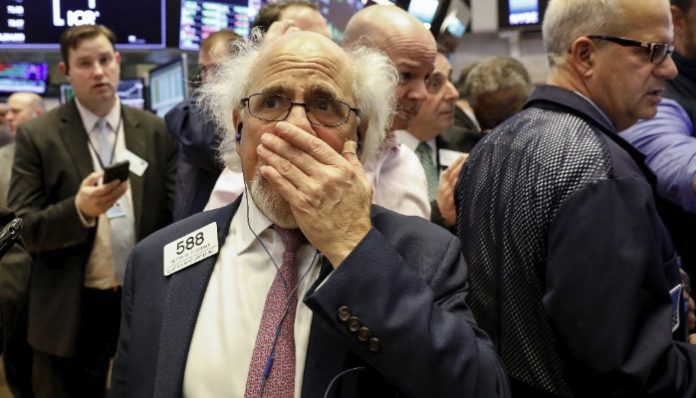Stocks were down big again this morning after bulls got slammed by a hot reading from the Fed’s favorite inflation gauge. Tech led the major indexes lower as the market awaited comments from several Fed officials, two of whom – Loretta Mester and Jim Bullard – are among the Fed’s “hawkiest” hawks.
Before trading opened, investors learned that the core Personal Consumption Expenditures (PCE) Index climbed 0.6% month-over-month (MoM) in January, beating the 0.5% estimate. Year-over-year, core PCE jumped 4.7% vs. 4.4% expected.
Consumer spending, personal income, and savings all beat estimates as well.
This was not what the Fed wanted to see with the current fed funds rate only 50 basis points away from its projected terminal rate of 5.0%-5.25% for the year.
Prior to last week, the market assumed that the Fed would raise rates by 25 basis points at its next two meetings.
Now, though, investors are worried that the Fed will uncork a sudden 50 basis point increase instead. Last week’s hawkish comments from Fed officials got the ball rolling in this regard in addition to a blowout jobs report and far better-than-expected retail sales.
This morning’s core PCE print only added more fuel to the hawkish fire.
But some analysts remain optimistic that the market will turn a corner before surpassing its December lows.
“This market has been pretty jittery this week, so any disappointing data is going to have an outsized impact as we’re seeing in the early movements,” said B. Riley’s chief market strategist, Art Hogan.
“This may test its recent lows, but I don’t think it’s going to push us to new lows. I think it’s just more confirmation that the Fed is likely going to go to 5% and 5.25%, which is consensus.”
Riley continued:
“Therefore, I don’t think this is enough to say the rally of 2023 is over. I just don’t think that’s the case. I’ll pick a lot of this is baked into what our expectations are for monetary policy already.”
That might be tough for investors to make sense of while stocks are racing lower, but Riley’s probably right in that the market will rebound near the December lows.
Even if the Fed raises rates by 50 basis points at its next meeting, it’s unlikely that the Fed will take rates any higher. Powell & Co. will just reach the terminal rate quicker than anticipated.
If rates are brought higher than that, it will probably happen toward the second half of the year once the Fed has a few more inflation reports under its belt.
But that plan could change quickly should inflation continue to defy expectations.
“Equity bulls and even Chair Powell have bragged about anchored expectations for inflation and how consumers and investors believe it is moving in the right direction,” wrote Morgan Stanley Chief Investment Officer Lisa Shalett said in a note.
“Given data crosscurrents, the central bank needs to tread carefully. Investors still wagering on a ‘Fed put’ or quick return to financial repression are apt to be wrong this time. Fed credibility is on the line, and it is likely to risk overshooting rather than quitting the inflation fight too early.”
So, whether you believe the 2023 rally is over or not, it might make sense to be a tactical short-term bear until the S&P hits its December lows, which are still a good 5% away. That leaves lots of room for stocks (and interest rate-sensitive names in particular) to generate solid returns on shorts/puts prior to the next bullish reversal, whether that arrives above or below the market’s recent lows.







